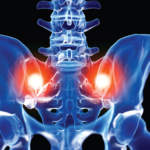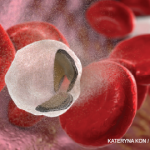When the researchers performed a second sensitivity analysis using only cases with total central radiologist agreement (84% of total cases), the overall diagnostic test statistics were unchanged for active inflammation with a positive predictive value of 52.4% and a negative predictive value of 95.9%, meaning there was a 52.4% probability that patients identified as positive for active inflammation by local reports were positive and a 95.9% probability that patients identified as negative for active inflammation by local report were negative. When researchers performed this second sensitivity analysis for the presence of chronic lesions, the positive predictive value was slightly improved, to 70.0%, whereas the negative predictive value was similar at 81.9%.
The authors concluded from this second sensitivity analysis that most of the discordance appeared to be due to errors in differentiating normal physiologic metaphyseal equivalent signal from pathologic subchondral marrow edema. The investigators found that in 27 cases (23%), local radiologists identified active inflammation when the central review reading deemed the same patients’ joints as normal.
Implications for Patients
Dr. Weiss calls this an important study, noting that, “because this is a real problem for the evaluation of these patients, we want interpretations to be as accurate as possible.”
She also emphasizes this study represents a concerted effort across eight institutions in the U.S. The study revealed that not all centers use the same sequences, and many do not perform the coronal oblique sequences, which are ideal for visualizing the synovial part of the joint. Although this situation is a problem, it’s not the major problem.
“This is not an image quality issue,” says Dr. Weiss. “This is an interpretation issue. … There are some normal maturational changes that occur at the SI joint that can be confused for minor inflammation.”
Dr. Weiss says the conclusions of the paper are clear: It’s challenging to interpret the MRI of the SI joint in children if you aren’t familiar with the appearance of a normal maturing pelvis.
On the positive side, local radiologists are quick to recognize and diagnose SI joint inflammation; very few incidents were missed by the local radiologists. Instead, the study points to a problem of misidentifying normal maturing SI joints as sacroiliitis. When radiology reports indicate findings consistent with active sacroiliitis, the rheumatologist may be influenced toward treatment with a biologic.
In 88% of the MRIs reviewed, the treating rheumatologist’s interpretation of the imaging, as documented in the medical records, agreed with the local radiology report, suggesting that they were transcribing the local radiologist’s report into their notes. Therefore, Dr. Weiss emphasizes the importance of accurately diagnosing patients to avoid both under- and overtreatment.

